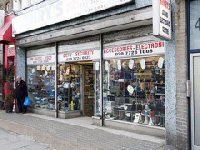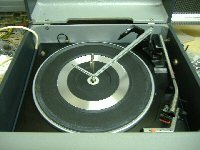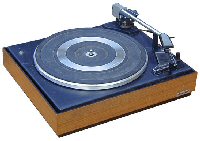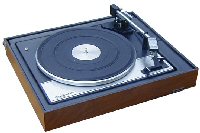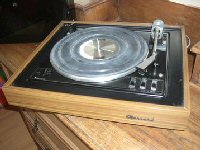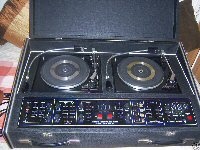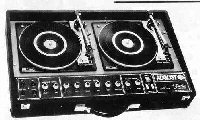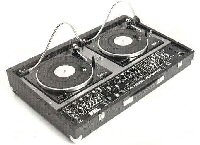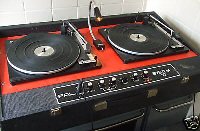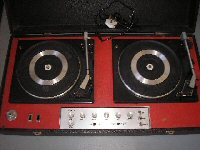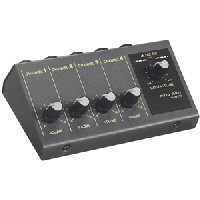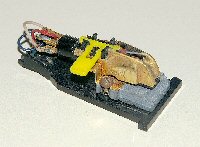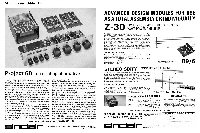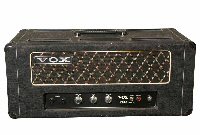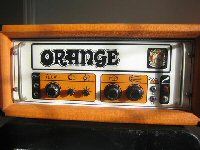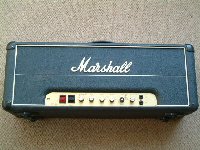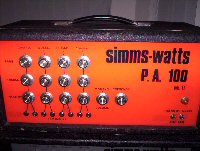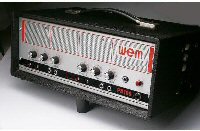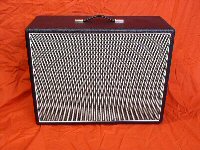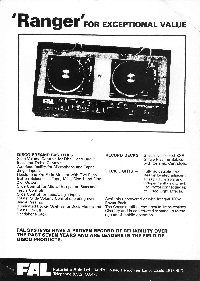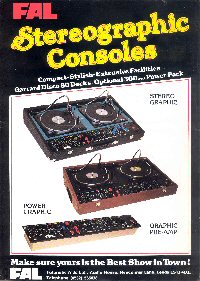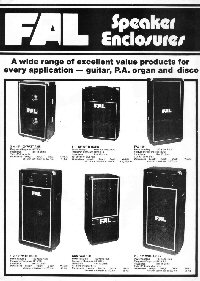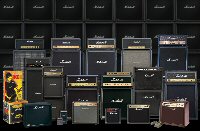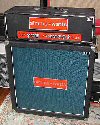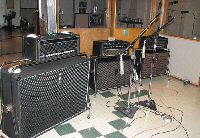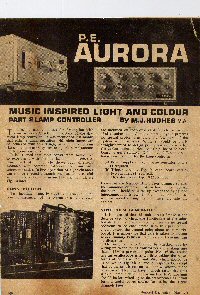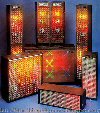
|
Ramblings of an old deejay
AMPLIFIERS
|
So we get to the Amplifier, and the thing that annoys me the most about Maplins and many other shops; 'Music
Power'. Let's sort this out first. There is no such thing as 'Music Power'. There are no instruments designed
to measure it and there are no units (such as Watts) that relate to 'Music Power' in a scientific way. 'Music
Power' is a term coined in the 70s to make cheap Music Centres,Record Players etc, look better than they really
were. Put simply,this is how it goes: Flodelity HiFi Ltd design a stereo record player. It will have a BSR deck
(complete with plastic turntable that had a tendency to warp), and a crystal (not ceramic) pick-up. The amplifier
will be two cheap ICs, each producing about 5W RMS. Now, RMS is the true measure of power and an amplifier that can
deliver some RMS measured output might easily hit twice that on a peak,that is a very short duration sound that shoots
up for a very short time (if it keeps doing it the amp and/or the speakers are going to go bang). Aha, say the
marketing department, we can have 10W peaks,so we could call it say, 'Music Power'. But wait,there are two speakers
so really we have a 20W system, hmm, yes,but in theory if it was 'bridged' we could get something approaching 40W,
and with peaks even higher, why we have a 50W music power amp! (Bridging invloves driving a speaker stack from BOTH
audio channels at the same time which, in effect, quadruples the power (its all boring maths).....
....which is why you can today go into a certain well
known 'Disco Shop' and buy yourself a 500W (Max - always the 'max' word is there).amplifier, except it isn't.
What you really have are two channels that produce around 80W rms (if you are lucky) and when bridged,
may hit 500W peaks, mono. You take your shiny new amp to your next gig,wind it up,and wonder why the speakers sound
awful long before your 'massive' amp has 'blown away' your audience.
The RMS power of an amplifier is the power it can deliver, continuosly,and we have already seen why the speakers should
be rated at least 50% higher than the amp. Emerging,newly trained to repair TVs et al, from Slough Training Centre, the
theory I had learned proved that 20Watts should blow the roof off. At that time there was a simple rule for Amps;
a pound a watt. Earning,then, £15.00 a week, Amps were expensive. A company called Linear ( I often wonder if that was
the birth of the now huge Linear Devices), produced the Linear70 and it was the benchmark for many Discos (down here),
and yes, that was RMS. A few Discos had moved up to 100W and a fellow DJ I knew ran 200W - back then that was a lot of
sound. With very few 'Disco Amps' about, Amps used by bands were common as were home-brews. Some of the ready built
amps had a strong home-brew look too. Names like FAL and RSC should jog a few memories. Also, back then, a young man named
Clive Sinclair was marketing a number of modules, in particular for a HiFi system called 'Project 60', yep,20W RMS/channel.
So it was that my first few gigs were run with a Z30 (20W)Sinclair module. Of course, the theory fell to bits because
speakers are so very inefficent that most of the 20W gets lost (in ways we needn't talk about). I had two coloumn speakers,
each containing four eight inch speakers. We need some more pictures. |
SPEAKERS
LIGHTS
| This time around I have no Transit so all the gear has to go in the car (and was designed that way). I set out a few design rules, the main being that everything had to do more than one job. The lightscreens are built into the lids of my four record boxes - in the 70s there were two, each holding 600 singles. I had to cut them in half this time 'cos they're ble***ng heavy! Each lid is 14" x 24". Inside there is a strip of 12v festoon bulbs up the middle, and a strip of high power leds running up each side. In the Mixer cover I have built a PIC micro (last count there are 21 PICs in the system...), which turns the sound into numbers that it sends to the screens. With very low sound the bulbs chase up and the leds down, but with loud sounds they act as Vu levels. The effect of the coloured bulb glow and the harsh LEDs looks great. |
PROJECTORS
In the 70s every Disco had a sound-to-light system of some sort, a Strobe and a projector.
Usually, the projector was filched from Dad who didn't really mind because it gave him
an excuse to buy a new one. I took the motor from my rubbish sequencer and spent hours
(with a file) making an aluminium wheel, which had holes covered in coloured film - you
can see it on one of the pics on this site. Around this time Rank-Aldis produced a projector
which is now legendary - so good that it is still highly prized (check out Ebay). It was the
Tutor; 250W quartz-halogen and exceptional optics. It also has a handy 12v ouput on the back,
and its design makes the fitting of effects a doddle. Some of the better Discos (and many bands)
began to use them, and eventually I scraped up £80.00 and bought one too,with an oil wheel from
Optokinetics. The images here are by kind permission of The FunkyParrot.com.
I will not attempt to repeat the excellent history that you will find on that website -make sure you visit it.
One thing I can add concerns the final Gnome version. If you find one - RUN. I got hold of two.
The fan has been changed and is now totally inadequate (both had broken heat filters and MELTED main lens carriers.
I replaced all on one of them - it lasted an hour. They went to the tip (except the transformers).
I now use five Tutor IIs (plus a couple of Moonflowers and a twin head unit from Abstract).
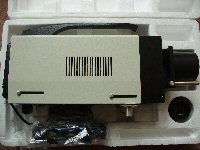
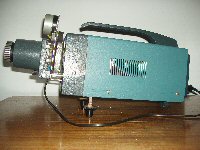
And on my left...the Rank Aldis Tutor II, and on my right - a pile of cack. |
| But what about the wheels you may ask, or not. Take a good long wander through Karillion if you want to know all about the development of these, still popular, effects. Read on for my 'secrets' that I have developed to make easy, cheap and strong, Perspex wheels. Oh, yes, really. |
OIL WHEELS AND STUFF
| It has always been 'The Way' that oil wheels are made from thin sheets of glass. Over a few months of experiments I have developed a way to make them easily, and cheaply, from Perspex - in fact a £15.00 sheet from B&Q yields at least ten double wheels - three discs per wheel for multicolours. I will be doing a page on how to make them, eventually. One other thing; I went to an audition in London (which saw me sent off to Germany), and one of the Discos there was actually having the attentions of a soldering iron to get it going.Another was opened up to reveal a complete mess of wiring which the DeeJay was trying to fix.... So this time around I started with a rule : every part of the Disco must fit together with no tools at all, and it does.For my (many) oil wheels, I have designed a magnetic system which works like magic. I can swap a wheel in seconds, and set-up, take-down, is just as easy. It has proved totally reliable and I am able to use it with my one Optikinetics wheel too. When I do my 'How-To' on wheels I will include the details of this system. |
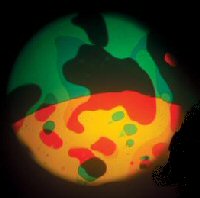
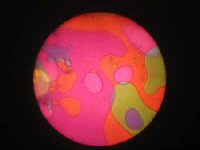
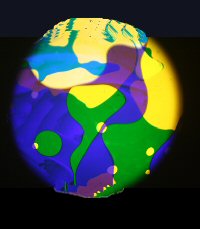
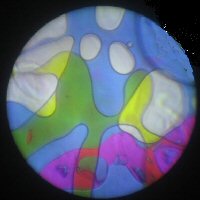
|
|
Then the was UV. Black light,UV,was relatively new and I first saw it used by a Disco that had two, 4' UV tubes.Of
course, that meant I had to get it too. I ended up with an HP UV lamp (the same as the ones used in UV Cannons now),
and a big ballast coil screwed under the deck stand. Now then, a word. DO NOT buy those lightbulbs that look like
UV lamps 'great for parties', or so they say,at around £5.99 from your local friendly Disco shop. DON'T. I bought six
of them, made boxes. Fitted them to the Disco.Total crap - you get more UV from the sun, when it's raining. I then
bought 6 8W UV tubes - amazing. In a carefully controlled scientific experiment, I turned out the light in the garage
and found that there was more UV from one 8W tube than all the rubbish 75W bulbs together. They went in the bin. Next I bought a
400W HP lamp. I made a case from an old CCTV case, used a stainless-steel salad bowl as a reflector,and housed the
ballast in a scrap Tutor II case (the result of the Gnome fiasco). |
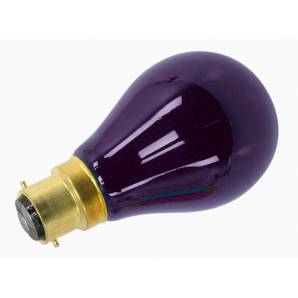
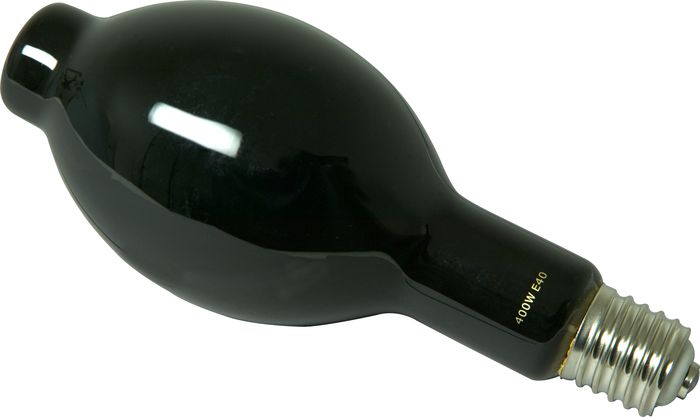 The one on the left - DO NOT BUY, the one on the right DO BUY BUT read my 'how to' BEFORE
YOU PLUG IT IN!!!
HOW TO. On the right is a 400W HPS lamp - the very one used in the UV Cannons. To make
it work you need a ballast - why doesn't matter, what does matter is that if you just
plug it in it will go 'pop'. All you do with a simple ballast is wire it in series.
Ballasts tend to be big and heavy (hence my use of the old Tutor), but by keeping it
in another unit, the IV is very light and easy to hang from a rig. Pics of mine will
be comming.
The one on the left - DO NOT BUY, the one on the right DO BUY BUT read my 'how to' BEFORE
YOU PLUG IT IN!!!
HOW TO. On the right is a 400W HPS lamp - the very one used in the UV Cannons. To make
it work you need a ballast - why doesn't matter, what does matter is that if you just
plug it in it will go 'pop'. All you do with a simple ballast is wire it in series.
Ballasts tend to be big and heavy (hence my use of the old Tutor), but by keeping it
in another unit, the IV is very light and easy to hang from a rig. Pics of mine will
be comming.
|
